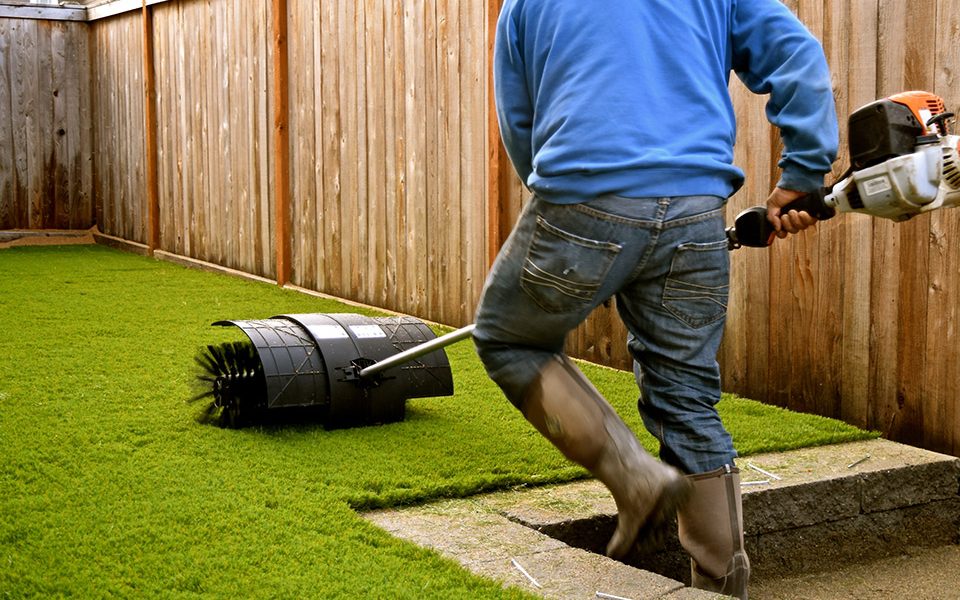How To Improve Turf Grass Drought Survival
Drought survival refers to how well your grass survives dry spells.
When drought occurs, lawns lose their lush green color, turning dark or golden brown. The brown colors do not indicate a completely dead yard. Instead, the color is the result of drought-induced summer dormancy.
As such, homeowners and businesses in the landscaping industry constantly seek ways to maintain a healthy and good-quality lawn with little or no supplemental irrigation.
It is more important now than ever, with record-high drought levels hitting California. Residents of LA will soon have to adhere to a one-day watering system as regulated by the state’s water officials.
The drought survival management practices below will ensure that your turf grass remains green even under stress.
1. Water deeply but not often
Less frequent but deep irrigations will encourage deeper root systems, making the lawn resilient and more drought-resistant. Apply small amounts of water only when it is necessary. When your turf grass starts to wilt, make sure your lawn is dry before re-watering. In fact, the footprints should stay compressed, and the color should dull for a few seconds.
Aim to water your grass early in the morning at about 8 am for the grass blades to dry out fast in the sun. When you water your lawn in the evening or late in the afternoon, you predispose your grass to fungal infections.
Additionally, early watering helps conserve water for a more extended period by ensuring minimal water loss to evaporation. When turf grass is watered at mid-day, it will probably lose most of the water before penetrating the soil into the roots.
2. Save and recycle available water
Recycling rainwater will help your plants during tough times. You can collect and store the water in a rain barrel and then connect it to a sprinkler. Unfortunately, barrels do not usually have the right pressure to run a sprinkler. Therefore, you should connect the hose to the rain barrel’s spigot and use it to channel water to specific areas of the turf grass.
3. Mow often but not short
Let your grass grow taller as drought nears, and often mow at the highest recommended height for your turf grass species. By doing this, you increase the leaf area, hence increasing the surface area for photosynthesis.
Plants make carbohydrates and store them for use during tough times like drought. Although growth will be slow during drought, tall blades will develop deeper and greater roots.
Also, make sure not to cut more than 1/3 of leaf blades during maintenance. Considering growth will be slow during drought, you can reduce mowing frequency. This will keep your blades sharp. Sharp blades make cleaner cuts that heal faster. Additionally, they tress the grass less than dull blades.
4. Skip fertilization
Excessive application of nitrogen fertilizers encourages the grass to focus more on growing its shoots instead of the roots it needs to survive. And because of insufficient water supply, severe stress will damage the turf grass. To curb this, cease fertilization on stressed grass.
If you have to fertilize, do so with a fertilizer containing slow-release phosphorus and nitrogen source to promote swift growth.
A fertilizer with higher levels of potassium will improve drought tolerance. Just be sure to water the fertilizer after application to prevent burn. The water also transfers the product into the root system, where the roots will move it up the plant.
Conduct a soil test to best monitor soil pH and nutrient levels. Being mindful of your lawn’s nutrient requirement will help you select the appropriate fertility products and design the ideal fertilization regime.
5. Identify specific points of interest for more focused watering
If you live in California or another area where drought is extended with no end in sight, you will want to conserve more water for future use and increase your grass’s survival chances. As such identifying ‘hotspots’ on your lawn is essential for mindful watering.
Areas near heat-reflecting surfaces such as buildings will be drier and need more water than cool areas like those shaded by huge shrubs or trees.
6. Stop herbicide treatment
Herbicides comprise plant treatments used to kill weeds, including those targeting broadleaf plants. You should not apply them during drought as they tend to be stressful even to grasses while they are actively growing.
Your lawn is already stressed during the dry season, and adding strains of herbicide applications will give weeds a competitive edge.
In fact, many herbicide labels warn against using products above a specific temperature or during times of drought. Another issue is that weeds do not absorb herbicides effectively during drought, limiting application effectiveness.
7. Grasscycling
When mowing your lawn, always allow grass clipping to stay on the lawn. Mowers nowadays cut the grass blades into tiny pieces that are practically unseen. The key upside of grasscycling is that the residual clippings return moisture and valuable nutrients to the grass. Apart from making your grass healthier, this will come in handy during times of drought.
8. Pest control
Pest control is another great way to improve your lawn’s drought tolerance. Keeping your turf grass healthy and in the best defense against weeds and pests will undoubtedly do well during tough times. When applying pesticides to your lawn, follow the instructions on the label to avoid damaging plants or animals.
During drought, pay attention to only areas that might be affected by pests. Fertilization, mowing, and irrigation practices mentioned above will help reduce the need for pest control measures.
9. Choose other alternatives to Turf grass
You may have planted your lawn in a place it cannot survive. In such a case, homeowners should consider other options for turf.
You can replace some of it with drought-resistant perennials, such as groundcovers or mulched beds, including trailing green plants like ivy or Asiatic jasmine. Although you will have to initially water the newly planted perennials, these plants will need minimum supplemental irrigation once rooted.
Final Thoughts
Improving turf grass drought survival should not be a challenging undertaking. Following these practices guarantees your turf grass extended survival periods and ensures a healthy and good-looking lawn during dry periods.


